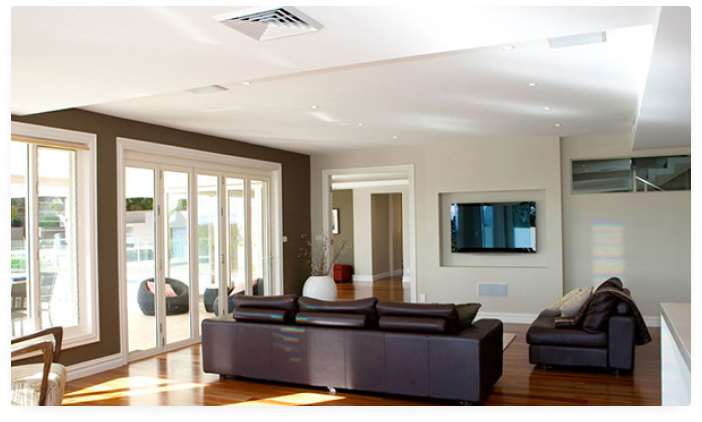Upgrading Your Ducted Reverse Cycle System: Timing It Right for Comfy & Efficient Living

In the ever-changing world of HVAC technology, Australian homeowners frequently wonder when it is time to say goodbye to their ageing ducted reverse cycle systems and adopt newer, more efficient alternatives. Because temperatures fluctuate throughout the year, a dependable and energy-efficient heating and cooling system becomes critical. However, determining when to replace such an important component of your home may be a difficult decision taking all things into consideration. In this post, we will look at the major signs that indicate when it is time to replace your ducted reverse cycle system, ensuring that your living spaces are comfortable, cost-effective, and environmentally sustainable year after year.
High Energy Bills
Inefficiency and high energy bills serve as clear indicators that your ducted reverse cycle system may be approaching the end of its useful life. As the system ages, its components can wear down, leading to reduced overall efficiency. This inefficiency results in higher energy consumption for the same level of heating and cooling output. Additionally, outdated technology in older systems may lack the advanced features found in newer models, which are specifically designed to optimise energy usage and adapt to your home’s unique needs. Deteriorating insulation and seals around duct joints further contribute to energy wastage, as conditioned air escapes into unconditioned areas. Frequent cycling and failure to meet modern energy efficiency standards are also signs that an upgrade is due. By replacing your inefficient system with a newer, energy-efficient ducted reverse cycle system, you can enjoy improved comfort and significant long-term cost savings on your energy bills.
Needing Constant Repairs
Ducted reverse cycle systems requiring constant repairs can be a strong indicator that their lifespan is nearing its end. As these systems age, their components can experience wear and tear, leading to frequent breakdowns and operational issues. The need for continuous repairs not only becomes a hassle for homeowners but also incurs ongoing costs that can quickly add up. Moreover, relying on a system that frequently malfunctions compromises your indoor comfort and leaves you at the mercy of unpredictable weather conditions. Instead of constantly patching up an ageing system, considering a replacement can offer long-term relief from the frustration of recurring issues and ensure reliable, efficient heating and cooling for your home. Investing in a newer and more dependable ducted reverse cycle system not only minimises the inconvenience of frequent repairs but also guarantees a comfortable and hassle-free living space for years to come.
Inconsistent Heating and Cooling
If you find that your ducted reverse cycle system is delivering inconsistent heating and cooling throughout your home, it could be a clear indicator that it’s time for an upgrade. As these systems age, their performance may decline, leading to uneven temperature distribution and discomfort in different areas of your living space. Some rooms may feel too cold during winter, while others remain uncomfortably warm in summer. This lack of consistent comfort not only affects your day-to-day living but also signifies potential issues within the system. Ageing ductwork, worn-out components, and declining efficiency can all contribute to the system’s inability to maintain a steady and comfortable indoor climate. By opting for a new ducted reverse cycle system, you can enjoy reliable and even heating and cooling throughout your home, providing you and your family with the comfort and cosiness you deserve.
Unpleasant Noise During Operation
If your ducted reverse cycle system has gotten increasingly noisy while operating, this could be an indication that it is nearing the end of its useful life. Wear and tear on the system’s components might cause unusual and persistent noises such as rattling, grinding, or pounding over time. These noises not only disturb the calm and quiet of your house, but they also suggest potential mechanical problems inside the system. As the system ages, its components may become worn or loose, resulting in vibrations and clattering sounds while in use. Ignoring these audible warning cues could lead to more serious problems later on. Upgrading to a new ducted reverse cycle system can eliminate the bothersome noise and provide you with a quieter and more pleasant indoor environment, where you can relax and unwind without the constant disruption of a noisy HVAC system.
Age of Your Ducted Reverse Cycle System
The age of your ducted reverse cycle system can be an important element in evaluating whether it’s time to replace it. HVAC systems, like other appliances, have a limited lifespan. Ducted reverse cycle systems typically have an operational life of 10 to 15 years, depending on usage and maintenance. As the system ages, its efficiency may deteriorate, resulting in greater energy expenditures and decreased performance. In addition, older systems frequently lack modern features and energy-saving technologies found in the latest ducted reverse cycle models. If your system is nearing its estimated lifespan, it is critical to consider an upgrade or give thought to having a service technician come and check it out. Investing in a new ducted reverse cycle system not only ensures better energy efficiency and enhanced comfort but also provides you with peace of mind, knowing that you have a reliable and modern HVAC system ready to serve you for years to come.
Discover the Best Ducted Reverse Cycle System for Your Home
To learn more about ducted reverse cycle systems, chat with one of our friendly consultants at Climat. As Adelaide’s top air conditioning sales and service provider, we can assist you in choosing the right systems or products for your home. We offer trusted brands such as Daikin, Mitsubishi and more!
Contact us at 1300 85 65 85 today to speak to a team member!
